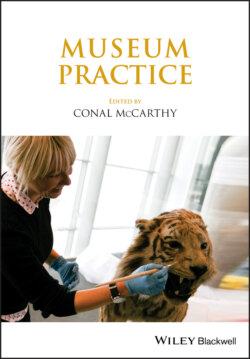Читать книгу Museum Practice - Группа авторов - Страница 35
1
THE ESSENCE OF THE MUSEUM
Mission, Values, Vision
ОглавлениеDavid Fleming
I once began a new job, and asked the museum director a couple of starter questions. What happens when you aren’t here? Answer: “Nothing, absolutely nothing.” What are the big things coming up next? Answer: “I’ve done everything.” This was in the dark days – not that long ago – when museums were run by an amateur cadre of egotistical directors who had no truck with accountability, or social value, or even with the notion of management, if that meant anything other than issuing orders. I have known very good museum directors. But I have also known directors lacking in spirit, courage, judgment, and integrity – and the one thing they had in common was their failure to have any vision.
Why does a museum exist? What is its purpose? What is it trying to achieve? What are its goals? Nothing is more important for a museum to sort out than its mission. The answers to these questions are to be found in the museum’s values. Add together the mission and the values, project forward, and you identify the museum’s vision.
These are not just clichés, management-speak jargon, used by different people in different ways, so that none of us is altogether clear about exactly what each of the words means. They capture the essence of the museum, its worth, its social value. They define for museum staff, and for others, exactly what it is they are trying to achieve: a shared sense of purpose. This is of fundamental importance in that museums are (mostly) non-profit organizations, and so they do not have the aim of making money as their ultimate goal.
Museums are not profit-driven, but value-driven. We are here to deliver services to customers, not profits, nor dividends to shareholders. Our work is not solely about our financial performance, and is, as a consequence, hard to measure and judge. Missions in the non-profit sector are complex, the values are profound, the visions are, or should be, inspiring.
It follows that being clear about a museum’s mission, values, and vision is the primary responsibility of the museum’s governing body, and, therefore, of the museum management team. It is this clarity that enables museums to demonstrate their success, to set themselves apart from others, to offer themselves as worthy of support, to earn and win dedication and commitment from their staff and other interested parties. In this chapter I consider these issues, drawing upon the experience of the corporate (profit-driven) sector as well the non-profit sector, including detailed reference to Tyne and Wear Museums and National Museums Liverpool, so as to throw light upon what museums are for, and how best they might promote their value in a world that is changing at a remarkable speed, and which remains largely ignorant, even skeptical, of the worth of museums. In doing so, it should be pointed out that I have been closely involved in both these institutions and offer this personal view of the internal process of revising mission and vision in order to show how this work can be carried out practically on the ground. I also wish to stress the need for the museum to understand its context before setting out its mission, and the importance of the research necessary for a museum to understand that context.
